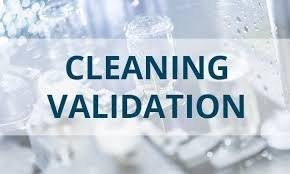Recovery Factor Determination in Cleaning Validation

Recovery Factor Determination in Cleaning Validation
Definition:
Recovery Factor (RF) is the percentage of analyte recovered from a surface during cleaning validation studies. It helps to account for possible losses during swabbing/rinsing and analytical testing, ensuring accurate estimation of residue levels.
Steps for Recovery Factor Determination:
-
Surface Selection:
-
Choose representative surfaces (stainless steel, glass, plastic, etc.) used in equipment manufacturing.
-
-
Spiking Procedure:
-
Known amount of the analyte (API, detergent, or cleaning agent) is spiked onto the surface.
-
Allow drying to mimic real contamination conditions.
-
-
Swabbing/Rinsing:
-
Perform swabbing/rinsing with validated technique, using suitable solvent and swab material.
-
-
Extraction:
-
Swabs are extracted in diluent/solvent to transfer the analyte.
-
-
Analysis:
-
Analyze using validated method (HPLC, TOC, GC, etc.).
-
-
Calculation of Recovery Factor (RF):
Recovery Factor (%)=Amount RecoveredAmount Spiked×100\text{Recovery Factor (\%)} = \frac{\text{Amount Recovered}}{\text{Amount Spiked}} \times 100
Acceptance Criteria:
-
Generally, 70–120% recovery is considered acceptable (industry practice).
-
Recovery studies must be performed in triplicate or more for consistency.
-
Worst-case conditions (hard-to-clean surface, low recovery analyte) should be evaluated.
Importance in Cleaning Validation:
-
Ensures accurate estimation of residues.
-
Adjusts analytical results for recovery correction.
-
Demonstrates robustness of swabbing/rinsing technique.
-
Regulatory requirement (FDA, EMA, WHO, ICH).
🎓 Discover one of the best Pharmaceutical Quality Assurance course available —click below to explore the course that’s shaping future Quality Assurance skills.
https://trcjw.on-app.in/app/oc/306166/trcjw

